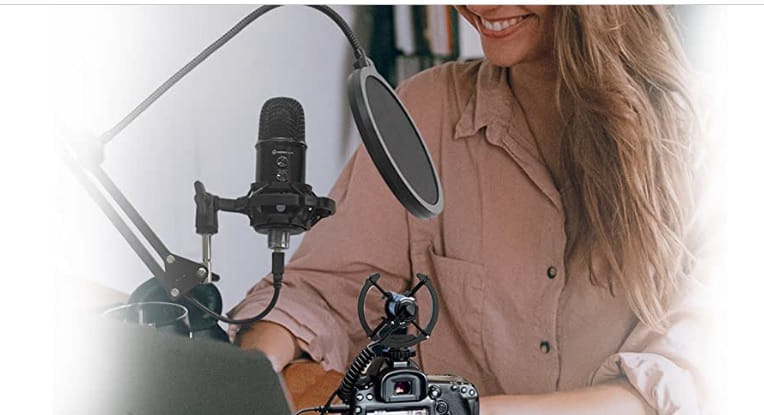When it comes to choosing the right microphone for your project, there are a variety of types and options available. Knowing how one type differs from another can help you choose the optimal option for getting high-quality sound recordings.
While there are numerous types of microphones out there on the market today to choose from, two that stand apart and have their own distinct advantages and disadvantages are condenser and dynamic mics
It is important to understand the differences between them in terms of their construction, applications, and capabilities so that you can make an informed decision when selecting a mic for your next recording session.
Overview of Condenser Microphones and Dynamic Microphones
When it comes to recording audio, not all microphones are created equal. While there are numerous types of microphones available, two of the most commonly used are condenser microphones and dynamic microphones.
Condenser microphones are known for their ability to capture sound with high levels of detail and sensitivity, making them a popular choice for capturing vocals and acoustic instruments.
On the other hand, dynamic microphones are generally more durable and less sensitive to sound, making them a go-to option for capturing loud instruments like drums and electric guitars.
Understanding the strengths and weaknesses of these two types of microphones can help ensure that you choose the right one for your specific recording needs.
How do Sound waves move differently through a Condenser Microphone compared to a Dynamic Microphone?
Condenser microphones use a charged diaphragm to pick up sound waves, while dynamic microphones use a coil and magnet to generate an electric signal. This fundamental difference in how the microphones work affects the way they capture sound.
With a condenser microphone, the charged diaphragm moves in response to sound waves, creating an electrical current that the microphone converts into a signal.
In contrast, a dynamic microphone uses a diaphragm that is attached to a coil that moves in a magnetic field to generate an electric signal.
Understanding these differences can help you choose the right microphone for your recording needs and achieve the perfect sound.
The benefits of using a Condenser Microphone for recording music and podcasts
When it comes to recording music or podcasts, having high-quality audio is key. A condenser microphone is an excellent choice for recording, with a range of benefits that make it a popular option for professionals and individuals alike.
One major advantage is that condenser mics are highly sensitive and can pick up quiet sounds that may be missed by other types of microphones.
Additionally, they produce a natural sound with a high level of detail, making it easier to edit and mix recordings.
Whether you’re recording vocals, instruments, or other sound sources, a condenser microphone can help you capture the rich, dynamic sound that makes your recordings stand out.
Tips for choosing the right type of Microphone for your audio recording needs
When it comes to audio recording, choosing the right type of microphone is crucial to ensure a high-quality recording.
One important tip is to consider the type of recording you will be doing. For example, if you are recording vocals or instruments, a condenser microphone may be the best option.
However, if you are recording sound effects or dialogue for a film, a shotgun microphone may be more appropriate.
It’s also important to consider your budget, as higher-end microphones can come with a hefty price tag.
By taking the time to research and understand your specific recording needs, you can make an informed decision on the best microphone for your project.
Examples of Popular Condenser microphones and dynamic microphones used by audio professionals
Audio professionals understand the importance of choosing the right microphone for their recordings, and two of the most popular types are condenser and dynamic microphones.
Some favorite condenser microphones among professionals include the Neumann U87, AKG C414, and Audio-Technica AT4053b. These mics are known for their high sensitivity and accurate sound reproduction.
On the other hand, dynamic microphones like the Shure SM7B, Electro-Voice RE20, and Sennheiser MD421 are favored for their durability, versatility, and ability to handle high sound pressure levels.
Reasons why some people prefer to use a condenser type of microphone over the Dynamic
For many audio professionals, condenser microphones are the go-to choice for recording. These microphones utilize an electrically charged diaphragm to pick up sound waves, resulting in a more sensitive and detailed sound when compared to dynamic microphones.
This sensitivity also makes condenser mics ideal for vocals and acoustic instruments, where capturing every nuanced sound is crucial.
Additionally, many condenser microphones have selectable polar patterns, allowing them to capture sound from specific directions and reduce unwanted background noise.
While dynamic microphones have their own strengths, it’s easy to see why so many people prefer the clarity and versatility of condenser microphones.

